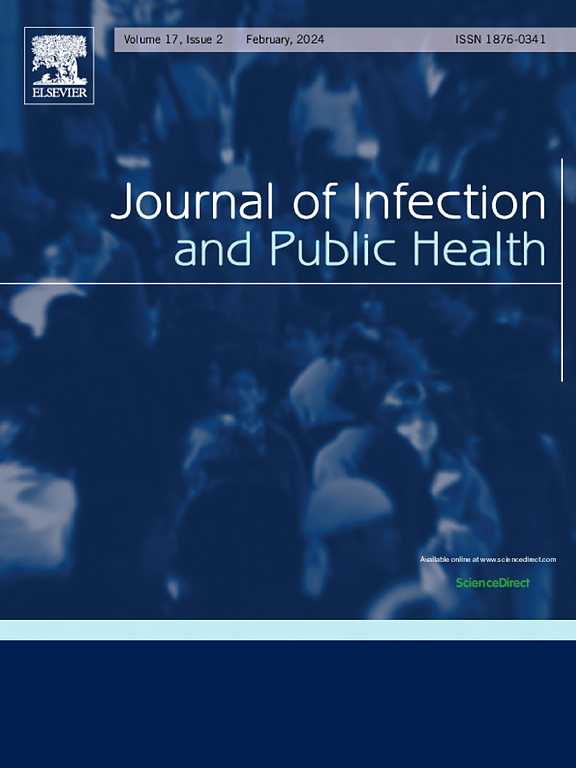Impact of COVID-19 on testing, positive cases, patient characteristics, and hospital contacts for respiratory syncytial virus, influenza, and pneumococcus in Danish children
IF 4.7
3区 医学
Q1 INFECTIOUS DISEASES
引用次数: 0
Abstract
Background
Respiratory infections substantially impact pediatric health. The COVID-19 pandemic introduced widespread non-pharmaceutical interventions, which influenced the incidence of common respiratory infections. This comprehensive study investigates the impact of these interventions on the incidence of respiratory syncytial virus, influenza, and invasive pneumococcal disease in Danish children.
Methods
We conducted a descriptive study based on a cohort of 1,790,464 Danish children from 2012 to 2022. We analyzed data from microbiology tests and hospital contacts to assess infection rates and testing patterns before, during, and after the COVID-19 pandemic. The relationships between testing and sex, age groups, chronic disease status, and hospital contacts were analyzed.
Results
We observed a marked decrease in cases of respiratory syncytial virus, influenza, and pneumococcus disease during the lockdown period. Once restrictions were lifted, there was a substantial resurgence in these infections. The frequency of testing for respiratory pathogens increased over time, with a rising proportion of healthy individuals without underlying chronic disease being tested. The proportion of positive tests linked to hospital contacts varied: there was a notable decline for respiratory syncytial virus and influenza post-lockdown, while pneumococcus cases continued to be strongly linked to hospital contacts.
Conclusion
The study highlights the impact of COVID-19 interventions on the epidemiology of pediatric respiratory infections, revealing a pattern of decreased incidence during lockdowns followed by a resurgence. More tests were carried out among an increasing proportion of healthy individuals. Such changes in testing practices and changing characteristics of tested populations have implications for understanding post-pandemic infection trends and healthcare resource allocation.
COVID-19对丹麦儿童呼吸道合胞病毒、流感和肺炎球菌检测、阳性病例、患者特征和医院接触者的影响
背景:呼吸道感染严重影响儿童健康。COVID-19大流行引入了广泛的非药物干预措施,影响了常见呼吸道感染的发病率。这项综合研究调查了这些干预措施对丹麦儿童呼吸道合胞病毒、流感和侵袭性肺炎球菌疾病发病率的影响。方法:我们对2012年至2022年的1,790,464名丹麦儿童进行了一项描述性研究。我们分析了微生物学测试和医院接触者的数据,以评估COVID-19大流行之前、期间和之后的感染率和测试模式。分析了检测与性别、年龄组、慢性病状况和医院接触者之间的关系。结果:我们观察到在封锁期间呼吸道合胞病毒,流感和肺炎球菌疾病的病例显着减少。一旦取消限制,这些感染就会大量复发。随着时间的推移,检测呼吸道病原体的频率也在增加,没有潜在慢性病的健康个体接受检测的比例也在上升。与医院接触者相关的阳性检测比例各不相同:呼吸道合胞病毒和流感在封锁后显著下降,而肺炎球菌病例继续与医院接触者密切相关。结论:该研究强调了COVID-19干预措施对儿童呼吸道感染流行病学的影响,揭示了封锁期间发病率下降后又卷土重来的模式。在越来越多的健康个体中进行了更多的测试。检测方法的这种变化和检测人群特征的变化对了解大流行后的感染趋势和卫生保健资源分配具有重要意义。
本文章由计算机程序翻译,如有差异,请以英文原文为准。
求助全文
约1分钟内获得全文
求助全文
来源期刊

Journal of Infection and Public Health
PUBLIC, ENVIRONMENTAL & OCCUPATIONAL HEALTH -INFECTIOUS DISEASES
CiteScore
13.10
自引率
1.50%
发文量
203
审稿时长
96 days
期刊介绍:
The Journal of Infection and Public Health, first official journal of the Saudi Arabian Ministry of National Guard Health Affairs, King Saud Bin Abdulaziz University for Health Sciences and the Saudi Association for Public Health, aims to be the foremost scientific, peer-reviewed journal encompassing infection prevention and control, microbiology, infectious diseases, public health and the application of healthcare epidemiology to the evaluation of health outcomes. The point of view of the journal is that infection and public health are closely intertwined and that advances in one area will have positive consequences on the other.
The journal will be useful to all health professionals who are partners in the management of patients with communicable diseases, keeping them up to date. The journal is proud to have an international and diverse editorial board that will assist and facilitate the publication of articles that reflect a global view on infection control and public health, as well as emphasizing our focus on supporting the needs of public health practitioners.
It is our aim to improve healthcare by reducing risk of infection and related adverse outcomes by critical review, selection, and dissemination of new and relevant information in the field of infection control, public health and infectious diseases in all healthcare settings and the community.
 求助内容:
求助内容: 应助结果提醒方式:
应助结果提醒方式:


